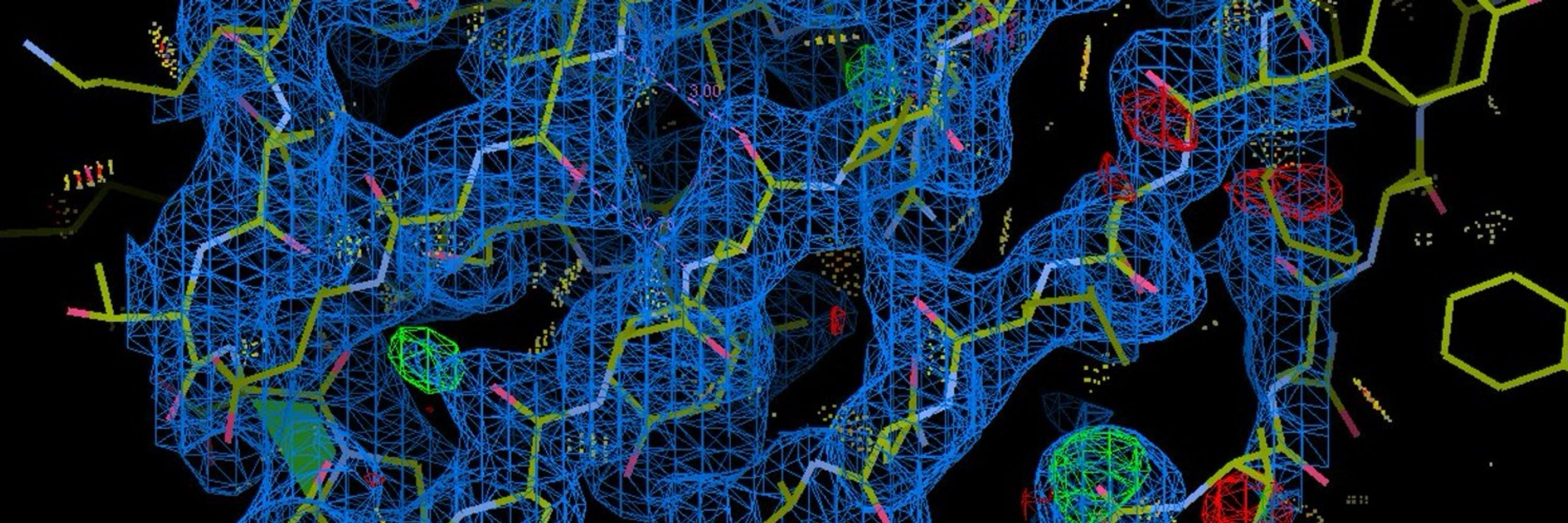
Daniel Fox
@danielrfox.bsky.social
PhD student in the Grinter Lab at Monash University + The University of Melbourne. Interested in CryoEM, de novo protein design and host-pathogen interactions. Views my own. 🦠🔬🌈
Pinned
Daniel Fox
@danielrfox.bsky.social
· Jul 10
Excited to share our latest work using AI-designed proteins to block heme-piracy by E. coli. Published in @natcomms.nature.com. A team effort between my lab and the @knottrna.bsky.social lab, with experimental work led by the talented @danielrfox.bsky.social
www.nature.com/articles/s41...
www.nature.com/articles/s41...

Inhibiting heme piracy by pathogenic Escherichia coli using de novo-designed proteins - Nature Communications
Many pathogens encode transporters that extract heme directly from host proteins. In this study, the authors demonstrate the utility of de novo-designed proteins in understanding the mechanism behind ...
www.nature.com
Proud to share some of the work from my PhD is now out in Nature Communications! Very grateful to all coauthors who helped make this happen, especially my supervisors @rhyswg.bsky.social and @knottrna.bsky.social for their support. 🩸 🦠 🔬
Reposted by Daniel Fox
Our paper on the Bacteroidota BAM complex is out in @natmicrobiol.nature.com! With @madejmar.bsky.social
We found that BAM in Bacteroides and Porphyromonas gingivalis has a distinct architecture from BAM in Proteobacteria.
doi.org/10.1038/s415...
We found that BAM in Bacteroides and Porphyromonas gingivalis has a distinct architecture from BAM in Proteobacteria.
doi.org/10.1038/s415...

Structure of a distinct β-barrel assembly machinery complex in the Bacteroidota - Nature Microbiology
Structural and functional characterization of the β-barrel assembly machinery complex in Bacteroidota reveals a distinct, seven-component complex with a large extracellular domain that may enable β-barrel–surface lipoprotein complex assembly.
doi.org
October 2, 2025 at 6:20 AM
Our paper on the Bacteroidota BAM complex is out in @natmicrobiol.nature.com! With @madejmar.bsky.social
We found that BAM in Bacteroides and Porphyromonas gingivalis has a distinct architecture from BAM in Proteobacteria.
doi.org/10.1038/s415...
We found that BAM in Bacteroides and Porphyromonas gingivalis has a distinct architecture from BAM in Proteobacteria.
doi.org/10.1038/s415...
Reposted by Daniel Fox
This one is a bit of a departure from the usual and definitely a work in progress!
We found that by using ab initio reconstruction at very high res, in very small steps, we could crack some small structures that had eluded us - e.g. 39kDa iPKAc (EMPIAR-10252), below.
Read on for details... 1/x
We found that by using ab initio reconstruction at very high res, in very small steps, we could crack some small structures that had eluded us - e.g. 39kDa iPKAc (EMPIAR-10252), below.
Read on for details... 1/x
September 13, 2025 at 12:05 AM
This one is a bit of a departure from the usual and definitely a work in progress!
We found that by using ab initio reconstruction at very high res, in very small steps, we could crack some small structures that had eluded us - e.g. 39kDa iPKAc (EMPIAR-10252), below.
Read on for details... 1/x
We found that by using ab initio reconstruction at very high res, in very small steps, we could crack some small structures that had eluded us - e.g. 39kDa iPKAc (EMPIAR-10252), below.
Read on for details... 1/x
Reposted by Daniel Fox
Excited to share our new review on AI-driven protein design - from its origins to today’s breakthroughs, methods, potential, and challenges ahead !
www.cell.com/structure/fu...
www.cell.com/structure/fu...
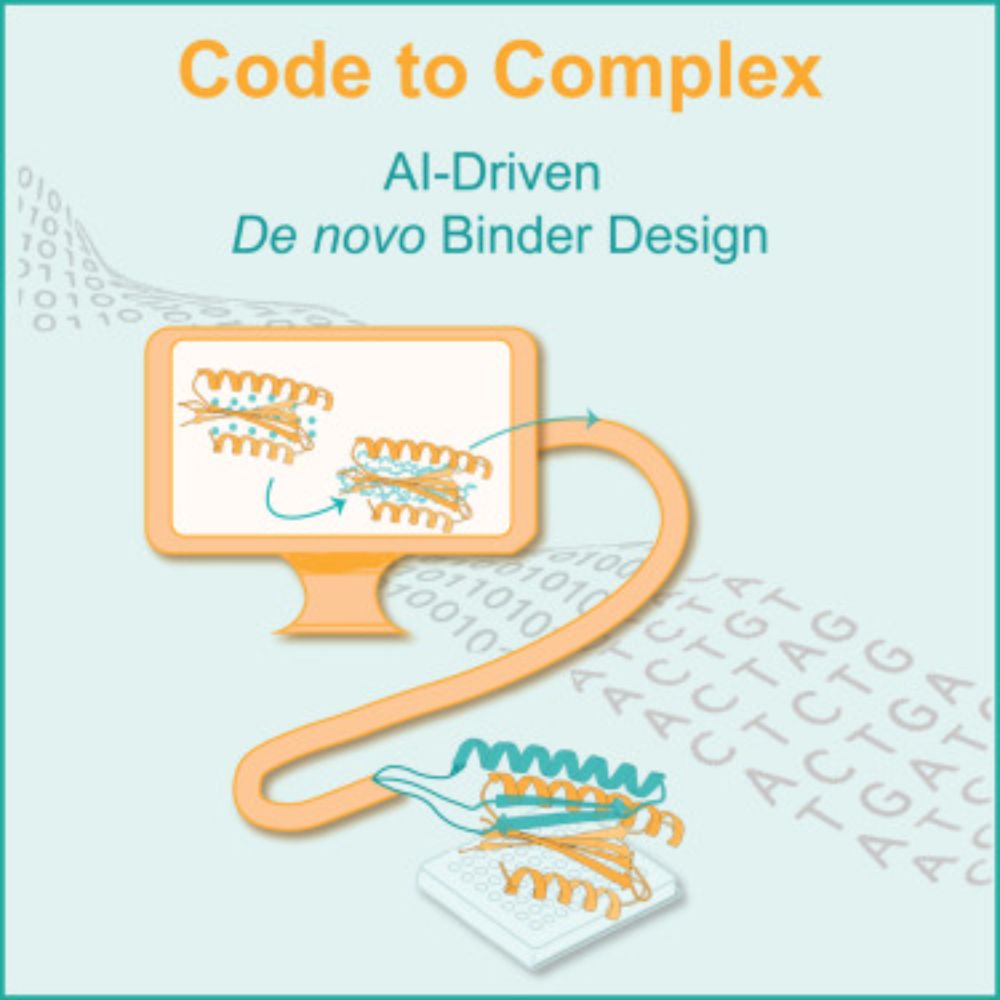
Code to complex: AI-driven de novo binder design
In this review, Fox et al. discuss how artificial intelligence has transformed our
ability to design new-to-nature proteins that bind target proteins with high affinity
and specificity. The authors de...
www.cell.com
September 2, 2025 at 10:51 AM
Excited to share our new review on AI-driven protein design - from its origins to today’s breakthroughs, methods, potential, and challenges ahead !
www.cell.com/structure/fu...
www.cell.com/structure/fu...
Reposted by Daniel Fox
Out today: A useful review on AI-designed protein binders.
It covers the history of this work + has lots of good case studies, including how these tools are being used to make snake anti-venoms.
The tables are particularly valuable.
It covers the history of this work + has lots of good case studies, including how these tools are being used to make snake anti-venoms.
The tables are particularly valuable.




September 1, 2025 at 6:54 PM
Out today: A useful review on AI-designed protein binders.
It covers the history of this work + has lots of good case studies, including how these tools are being used to make snake anti-venoms.
The tables are particularly valuable.
It covers the history of this work + has lots of good case studies, including how these tools are being used to make snake anti-venoms.
The tables are particularly valuable.
Quite proud of this one. Our review on AI-designed de novo binders out now in Structure. We give a brief history, outline the current ecosystem, highlight some standout applications and discuss the need for regulatory discussions. 🤖🧪🔬

Code to complex: AI-driven de novo binder design
The application of artificial intelligence to structural biology has transformed protein design from a conceptual challenge into a practical approach …
www.sciencedirect.com
September 2, 2025 at 4:06 AM
Quite proud of this one. Our review on AI-designed de novo binders out now in Structure. We give a brief history, outline the current ecosystem, highlight some standout applications and discuss the need for regulatory discussions. 🤖🧪🔬
Reposted by Daniel Fox
Did you know that some bacteria can generate ATP, the energy currency of life, literally out of thin air? 🌬⚡️
In PNAS today, we show how bacteria can do this using just three enzymes. Honoured to contribute to this study with Christoph von Ballmoos, Chris Greening and Gregory Cook
lnkd.in/gxm8SXxF
In PNAS today, we show how bacteria can do this using just three enzymes. Honoured to contribute to this study with Christoph von Ballmoos, Chris Greening and Gregory Cook
lnkd.in/gxm8SXxF
LinkedIn
This link will take you to a page that’s not on LinkedIn
lnkd.in
July 25, 2025 at 5:59 AM
Did you know that some bacteria can generate ATP, the energy currency of life, literally out of thin air? 🌬⚡️
In PNAS today, we show how bacteria can do this using just three enzymes. Honoured to contribute to this study with Christoph von Ballmoos, Chris Greening and Gregory Cook
lnkd.in/gxm8SXxF
In PNAS today, we show how bacteria can do this using just three enzymes. Honoured to contribute to this study with Christoph von Ballmoos, Chris Greening and Gregory Cook
lnkd.in/gxm8SXxF
Reposted by Daniel Fox
💥 Excited to introduce Bacformer 🦠 - the first foundation model for bacterial genomics. Bacformer represents genomes as sequences of ordered proteins, learning the “grammar” of how genes are arranged, interact and evolve.
Preprint 📝: biorxiv.org/content/10.1...
🧵 1/n
Preprint 📝: biorxiv.org/content/10.1...
🧵 1/n
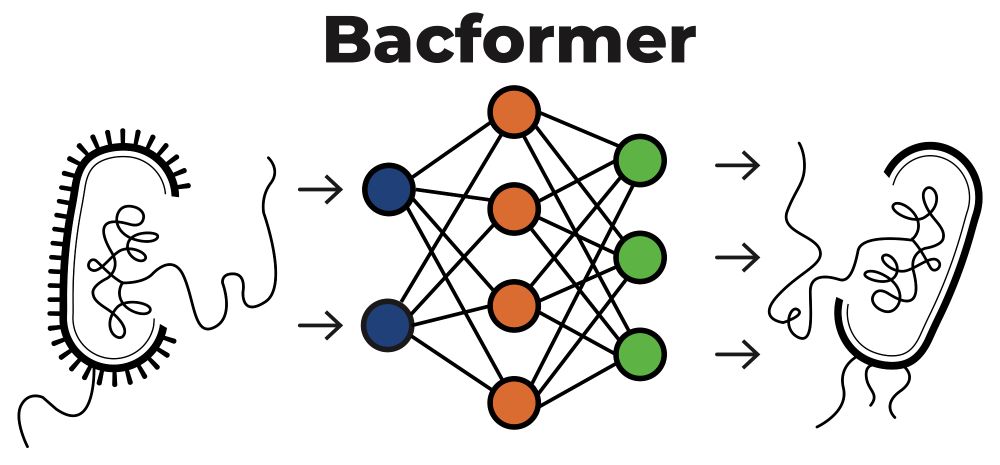
July 21, 2025 at 9:56 AM
💥 Excited to introduce Bacformer 🦠 - the first foundation model for bacterial genomics. Bacformer represents genomes as sequences of ordered proteins, learning the “grammar” of how genes are arranged, interact and evolve.
Preprint 📝: biorxiv.org/content/10.1...
🧵 1/n
Preprint 📝: biorxiv.org/content/10.1...
🧵 1/n
Reposted by Daniel Fox
Last reminder- Dr Rhys Grinter webinar @rhyswg.bsky.social is on in just a couple of hours- click through to obtain the link. #proteindesign #structbiol
You can sign up for future event information and reminders here:
australian-structural-biology-computing.github.io/website/
🧶🧬
You can sign up for future event information and reminders here:
australian-structural-biology-computing.github.io/website/
🧶🧬

WEBINAR: Leveraging deep learning to design custom protein-binding proteins
Be inspired by case studies that show you how deep learning methods are speeding up the process of designing custom proteins
www.eventbrite.com
July 14, 2025 at 11:32 PM
Last reminder- Dr Rhys Grinter webinar @rhyswg.bsky.social is on in just a couple of hours- click through to obtain the link. #proteindesign #structbiol
You can sign up for future event information and reminders here:
australian-structural-biology-computing.github.io/website/
🧶🧬
You can sign up for future event information and reminders here:
australian-structural-biology-computing.github.io/website/
🧶🧬
Reposted by Daniel Fox
New to nature proteins are the future! Proud to have contributed to this groundbreaking work! 🏴☠️
Excited to share our latest work using AI-designed proteins to block heme-piracy by E. coli. Published in @natcomms.nature.com. A team effort between my lab and the @knottrna.bsky.social lab, with experimental work led by the talented @danielrfox.bsky.social
www.nature.com/articles/s41...
www.nature.com/articles/s41...

Inhibiting heme piracy by pathogenic Escherichia coli using de novo-designed proteins - Nature Communications
Many pathogens encode transporters that extract heme directly from host proteins. In this study, the authors demonstrate the utility of de novo-designed proteins in understanding the mechanism behind ...
www.nature.com
July 10, 2025 at 12:03 AM
New to nature proteins are the future! Proud to have contributed to this groundbreaking work! 🏴☠️
Proud to share some of the work from my PhD is now out in Nature Communications! Very grateful to all coauthors who helped make this happen, especially my supervisors @rhyswg.bsky.social and @knottrna.bsky.social for their support. 🩸 🦠 🔬
Excited to share our latest work using AI-designed proteins to block heme-piracy by E. coli. Published in @natcomms.nature.com. A team effort between my lab and the @knottrna.bsky.social lab, with experimental work led by the talented @danielrfox.bsky.social
www.nature.com/articles/s41...
www.nature.com/articles/s41...

Inhibiting heme piracy by pathogenic Escherichia coli using de novo-designed proteins - Nature Communications
Many pathogens encode transporters that extract heme directly from host proteins. In this study, the authors demonstrate the utility of de novo-designed proteins in understanding the mechanism behind ...
www.nature.com
July 10, 2025 at 2:08 AM
Proud to share some of the work from my PhD is now out in Nature Communications! Very grateful to all coauthors who helped make this happen, especially my supervisors @rhyswg.bsky.social and @knottrna.bsky.social for their support. 🩸 🦠 🔬
Reposted by Daniel Fox
ASBC and Biocommons are building opportunities for researchers to discuss and explore protein design tech. First up is @rhyswg.bsky.social. Excited for this!

WEBINAR SERIES: Leveraging deep learning to design custom protein-binding proteins — Australian BioCommons
Be inspired by case studies that show you how deep learning methods are speeding up the process of designing proteins with desirable biophysical properties. More information Register
www.biocommons.org.au
July 2, 2025 at 8:47 AM
ASBC and Biocommons are building opportunities for researchers to discuss and explore protein design tech. First up is @rhyswg.bsky.social. Excited for this!
Grateful to have been awarded an ASBMB Fellowship and a YSP Fellowship to be able to present my work at the Young Scientist Program and at the FAOBMB2025 Conference.
It was a great opportunity to network with other students and ECRs and was completely inspired by all the cool science🔬🧬
It was a great opportunity to network with other students and ECRs and was completely inspired by all the cool science🔬🧬
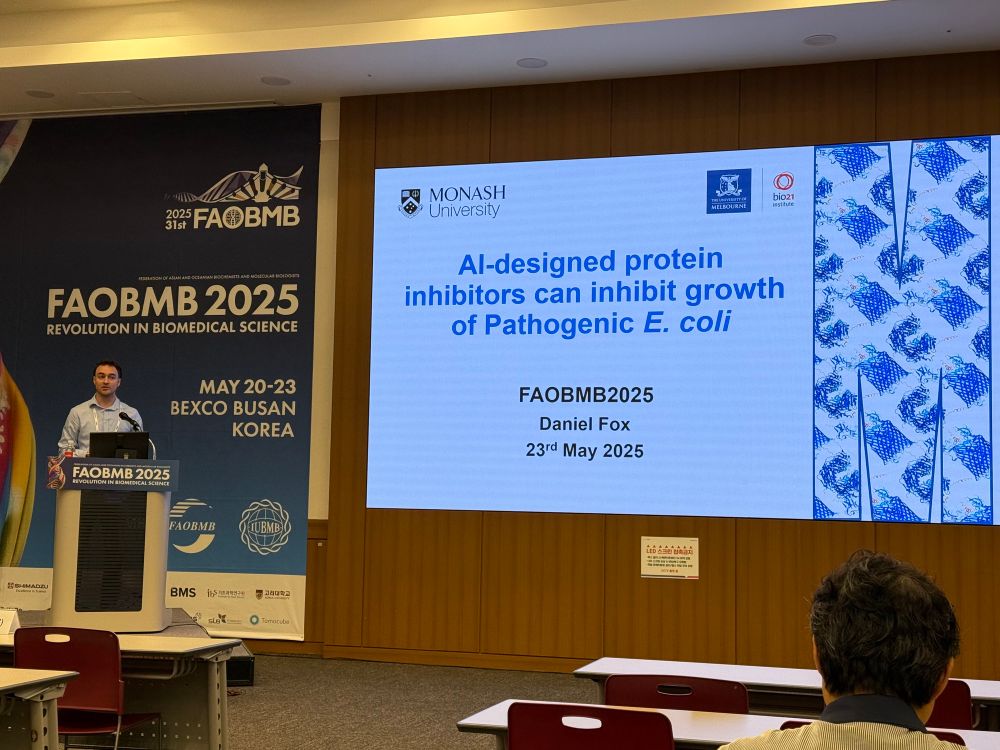
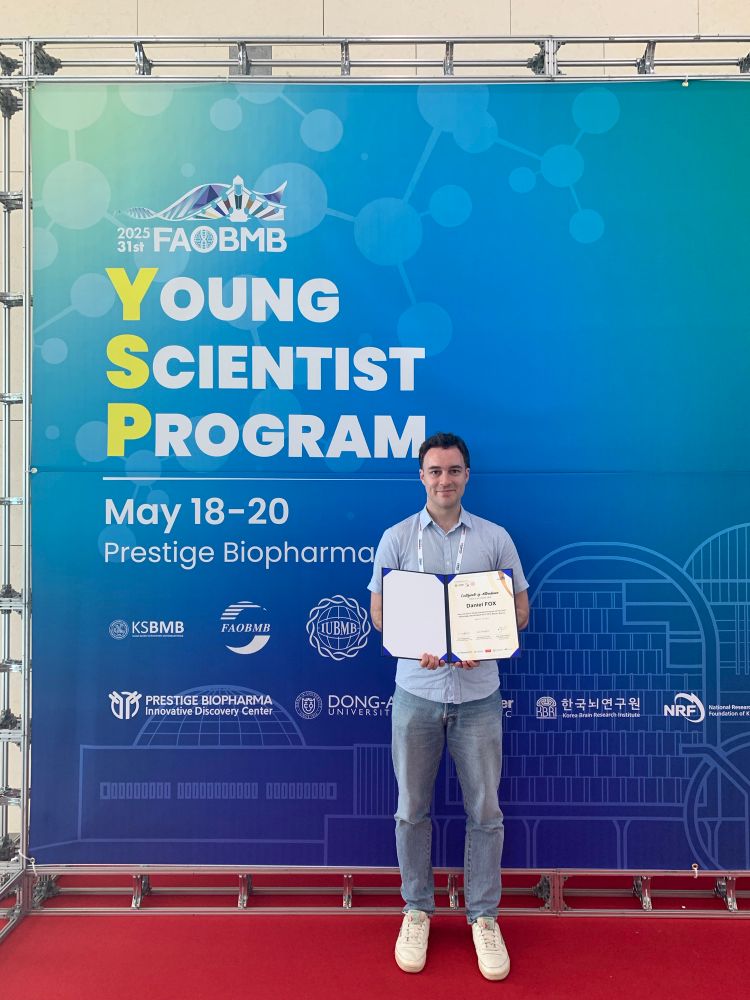
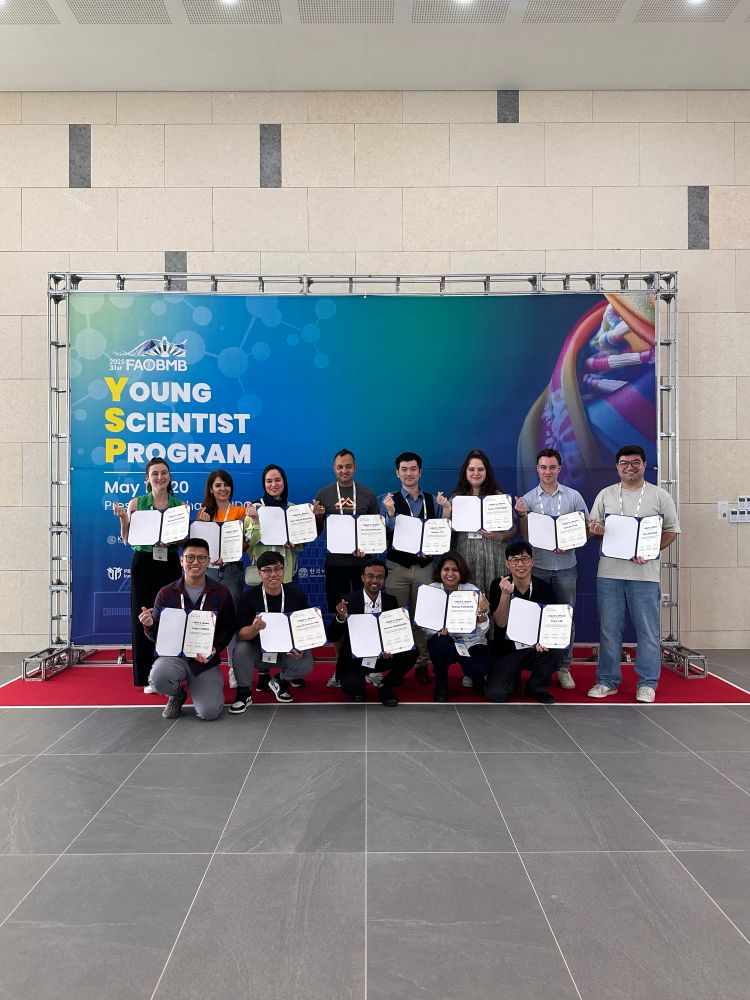
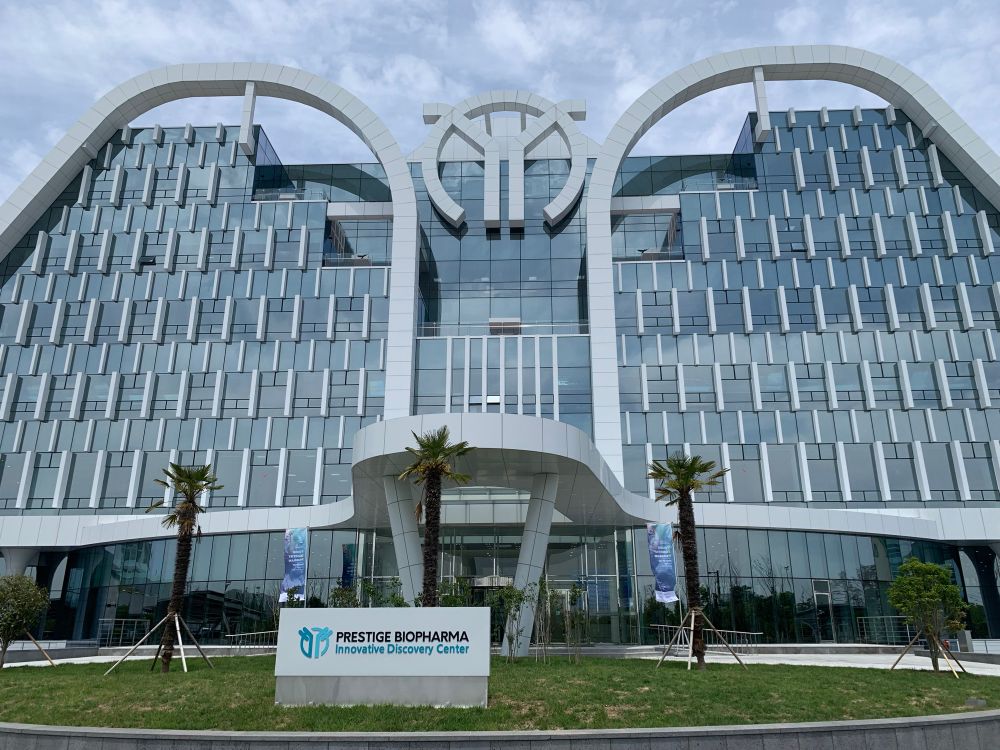
June 2, 2025 at 11:15 PM
Grateful to have been awarded an ASBMB Fellowship and a YSP Fellowship to be able to present my work at the Young Scientist Program and at the FAOBMB2025 Conference.
It was a great opportunity to network with other students and ECRs and was completely inspired by all the cool science🔬🧬
It was a great opportunity to network with other students and ECRs and was completely inspired by all the cool science🔬🧬
Reposted by Daniel Fox
96% of Australians want more done to protect nature. Meanwhile, just 0.06% of the budget went to on-ground biodiversity programs.
We’re losing species we love & major parties are sleepwalking through it.
Australians care. It’s time politicians did too.
www.theguardian.com/australia-ne...
We’re losing species we love & major parties are sleepwalking through it.
Australians care. It’s time politicians did too.
www.theguardian.com/australia-ne...

Australia is in an extinction crisis – why isn’t it an issue at this election?
Some of the country’s most loved native species, including the koala and the hairy-nosed wombat, are on the brink. Is this their last chance at survival?
www.theguardian.com
April 6, 2025 at 8:54 PM
96% of Australians want more done to protect nature. Meanwhile, just 0.06% of the budget went to on-ground biodiversity programs.
We’re losing species we love & major parties are sleepwalking through it.
Australians care. It’s time politicians did too.
www.theguardian.com/australia-ne...
We’re losing species we love & major parties are sleepwalking through it.
Australians care. It’s time politicians did too.
www.theguardian.com/australia-ne...
Reposted by Daniel Fox
Excited to share that our work on a family of pore-forming proteins is now live in Science Advances! We show structural snapshots across the entire pore-forming pathway for a cholesterol-dependent cytolysin-like (CDCL) bicomponent system.

March 30, 2025 at 10:50 AM
Excited to share that our work on a family of pore-forming proteins is now live in Science Advances! We show structural snapshots across the entire pore-forming pathway for a cholesterol-dependent cytolysin-like (CDCL) bicomponent system.
Reposted by Daniel Fox
We are hiring! The Formosa Group is hiring a Research Officer to join our program on #Mitochondria, #Metabolism & #MitochondrialDisease at the Monash BDI!
💡If you're passionate about mitochondrial research or know someone who is, please share! Apply now: careers.pageuppeople.com/513/cw/en/jo...
💡If you're passionate about mitochondrial research or know someone who is, please share! Apply now: careers.pageuppeople.com/513/cw/en/jo...
Job Search
careers.pageuppeople.com
January 30, 2025 at 6:53 AM
We are hiring! The Formosa Group is hiring a Research Officer to join our program on #Mitochondria, #Metabolism & #MitochondrialDisease at the Monash BDI!
💡If you're passionate about mitochondrial research or know someone who is, please share! Apply now: careers.pageuppeople.com/513/cw/en/jo...
💡If you're passionate about mitochondrial research or know someone who is, please share! Apply now: careers.pageuppeople.com/513/cw/en/jo...
Reposted by Daniel Fox
In Nature Chemical Biology today, we reveal how microbes clean our atmospheres by consuming carbon monoxide (CO) gas. A methodological tour de force from Ashleigh Kropp, Rhys Grinter, and David Gillett with broad implications for the atmosphere and bioenergetics. www.nature.com/articles/s41...
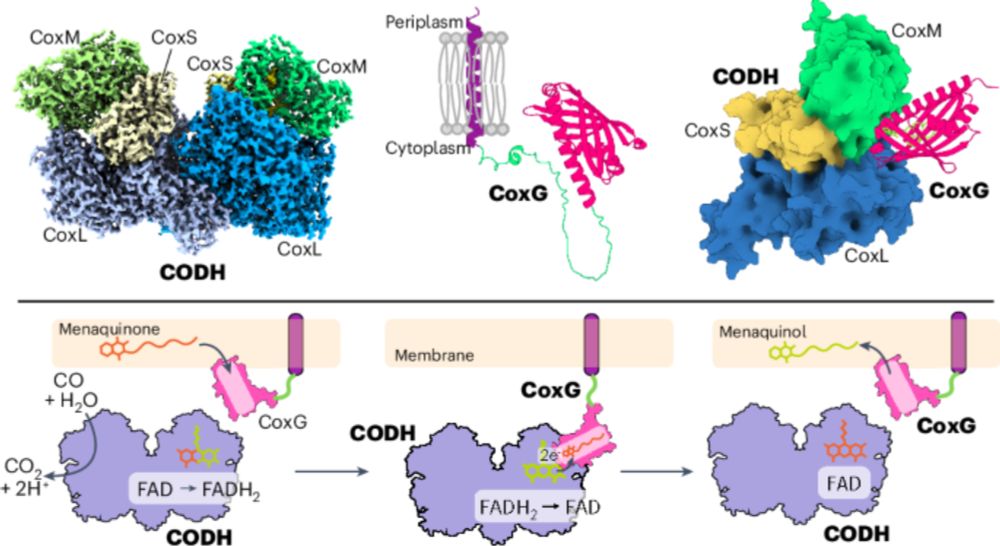
Quinone extraction drives atmospheric carbon monoxide oxidation in bacteria - Nature Chemical Biology
Here, Kropp et al. use cryo-electron microscopy and structural modeling to show that the enzyme [MoCu]-CO dehydrogenase interacts with its partner, the membrane-bound quinone-binding protein CoxG, to ...
www.nature.com
January 29, 2025 at 10:21 AM
In Nature Chemical Biology today, we reveal how microbes clean our atmospheres by consuming carbon monoxide (CO) gas. A methodological tour de force from Ashleigh Kropp, Rhys Grinter, and David Gillett with broad implications for the atmosphere and bioenergetics. www.nature.com/articles/s41...
Reposted by Daniel Fox
“De novo designed proteins neutralize lethal snake venom toxin” paper from the Baker lab just published in Nature.
www.nature.com/articles/s41...
www.nature.com/articles/s41...
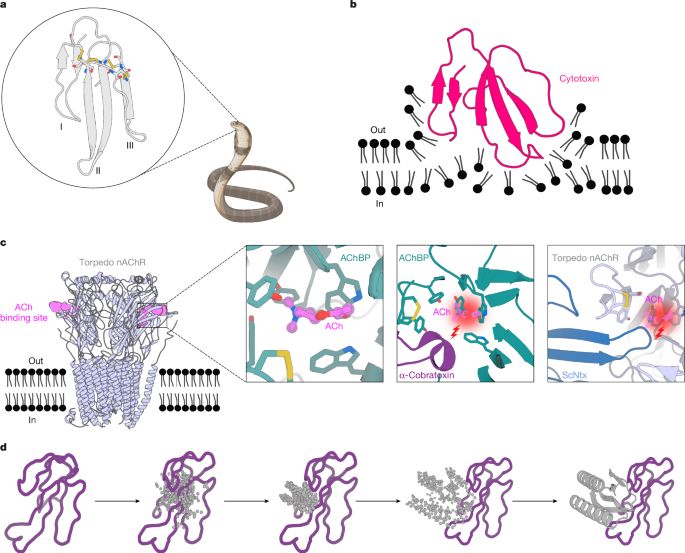
De novo designed proteins neutralize lethal snake venom toxins - Nature
Deep learning methods have been used to design proteins that can neutralize the effects of three-finger toxins found in snake venom, which could lead to the development of safer and more accessible an...
www.nature.com
January 16, 2025 at 12:50 AM
“De novo designed proteins neutralize lethal snake venom toxin” paper from the Baker lab just published in Nature.
www.nature.com/articles/s41...
www.nature.com/articles/s41...
Reposted by Daniel Fox
This pretty much settles it: we're entering the era of low-cost, on-demand binders for everything
Excited to see what people build now that "inject a llama with some junk and bleed it a month later" is no longer the cutting-edge tech
www.nature.com/articles/s41...
Excited to see what people build now that "inject a llama with some junk and bleed it a month later" is no longer the cutting-edge tech
www.nature.com/articles/s41...

De novo designed proteins neutralize lethal snake venom toxins - Nature
Deep learning methods have been used to design proteins that can neutralize the effects of three-finger toxins found in snake venom, which could lead to the development of safer and more accessible an...
www.nature.com
January 15, 2025 at 9:04 PM
This pretty much settles it: we're entering the era of low-cost, on-demand binders for everything
Excited to see what people build now that "inject a llama with some junk and bleed it a month later" is no longer the cutting-edge tech
www.nature.com/articles/s41...
Excited to see what people build now that "inject a llama with some junk and bleed it a month later" is no longer the cutting-edge tech
www.nature.com/articles/s41...
Reposted by Daniel Fox
This is such a cool initiative! DL4Proteins is democratizing deep learning for protein design and prediction at a pivotal time in science—a fantastic step toward making advanced protein engineering accessible to all!
github.com/Graylab/DL4P...
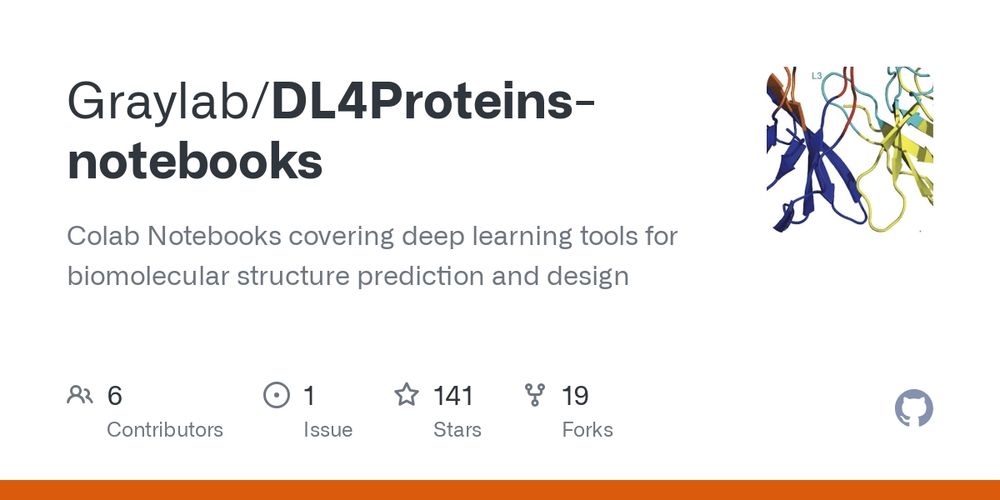
GitHub - Graylab/DL4Proteins-notebooks: Colab Notebooks covering deep learning tools for biomolecular structure prediction and design
Colab Notebooks covering deep learning tools for biomolecular structure prediction and design - Graylab/DL4Proteins-notebooks
github.com
December 14, 2024 at 11:35 PM
This is such a cool initiative! DL4Proteins is democratizing deep learning for protein design and prediction at a pivotal time in science—a fantastic step toward making advanced protein engineering accessible to all!
github.com/Graylab/DL4P...
Reposted by Daniel Fox
We updated our BindCraft preprint with lots of new exciting results! We release all our binder sequences and models, include more in silico analysis, novel design targets, and present AAV retargeting to specific cell types using de novo binders!
www.biorxiv.org/content/10.1...
www.biorxiv.org/content/10.1...
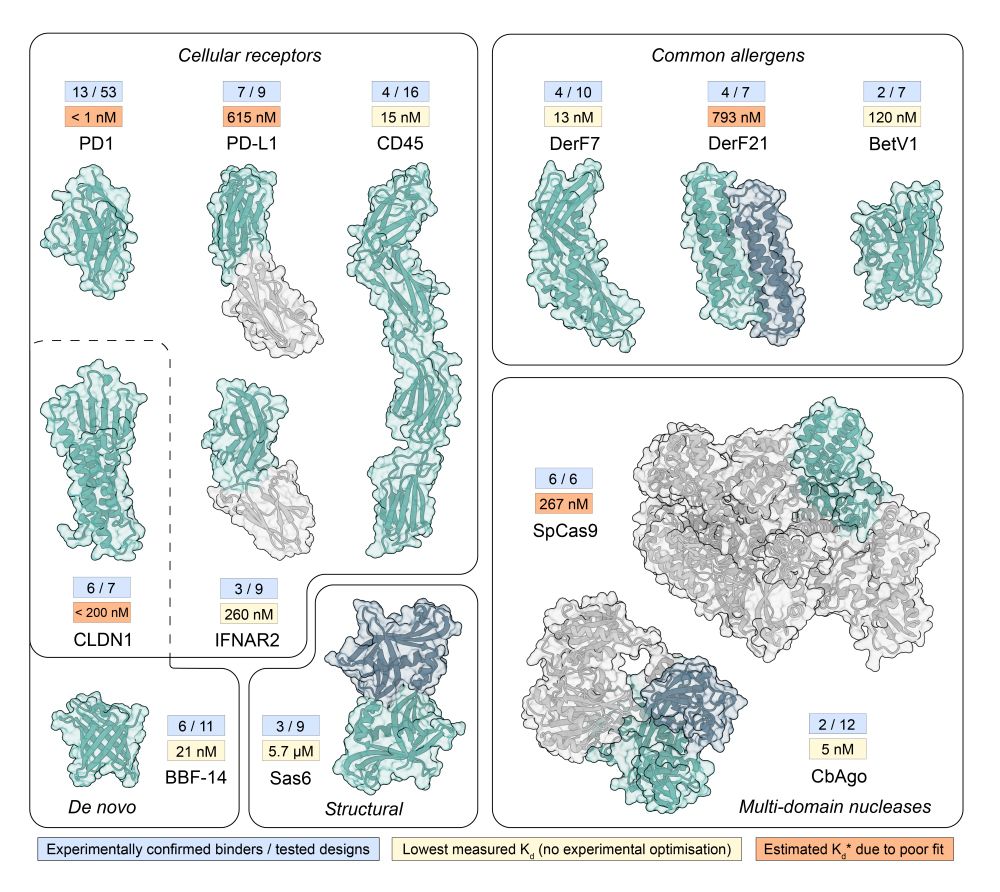
December 8, 2024 at 8:27 AM
We updated our BindCraft preprint with lots of new exciting results! We release all our binder sequences and models, include more in silico analysis, novel design targets, and present AAV retargeting to specific cell types using de novo binders!
www.biorxiv.org/content/10.1...
www.biorxiv.org/content/10.1...
Reposted by Daniel Fox
Excited to share my first-author preprint from the Knott Lab! Using de novo protein design, we developed anti-CRISPRs to potently inhibit CRISPR-Cas13. Thanks to my amazing co-authors !
www.biorxiv.org/content/10.1...
#CRISPR
www.biorxiv.org/content/10.1...
#CRISPR

De novo design of potent CRISPR-Cas13 inhibitors
CRISPR-Cas systems are transformative tools for gene editing which can be tuned or controlled by anti-CRISPRs (Acrs) - phage derived inhibitors that regulate CRISPR-Cas activity. However, Acrs that ar...
www.biorxiv.org
December 10, 2024 at 9:31 PM
Excited to share my first-author preprint from the Knott Lab! Using de novo protein design, we developed anti-CRISPRs to potently inhibit CRISPR-Cas13. Thanks to my amazing co-authors !
www.biorxiv.org/content/10.1...
#CRISPR
www.biorxiv.org/content/10.1...
#CRISPR
Reposted by Daniel Fox
Inhibiting heme-piracy by pathogenic Escherichia coli using de novo-designed proteins https://www.biorxiv.org/content/10.1101/2024.12.05.626953v1
December 6, 2024 at 12:45 PM
Inhibiting heme-piracy by pathogenic Escherichia coli using de novo-designed proteins https://www.biorxiv.org/content/10.1101/2024.12.05.626953v1
Reposted by Daniel Fox
Inhibiting heme-piracy by pathogenic Escherichia coli using de novo-designed proteins https://www.biorxiv.org/content/10.1101/2024.12.05.626953v1
December 6, 2024 at 12:45 PM
Inhibiting heme-piracy by pathogenic Escherichia coli using de novo-designed proteins https://www.biorxiv.org/content/10.1101/2024.12.05.626953v1
Reposted by Daniel Fox
Inhibiting heme-piracy by pathogenic Escherichia coli using de novo-designed proteins biorxiv.org/cgi/content/short/2024.12.05.626953v1
December 7, 2024 at 10:05 AM
Inhibiting heme-piracy by pathogenic Escherichia coli using de novo-designed proteins biorxiv.org/cgi/content/short/2024.12.05.626953v1
Reposted by Daniel Fox
Nice to see this work presented recently at BDI ! Congratulations!
The first major body of work from my PhD is now up on BioRxiv!
We used AI-designed binders to block the uptake of heme from hemoglobin through ChuA, a heme transporter found in pathogenic E. coli. 🦠🩸🔬
I’m very grateful for my supervisors and all coauthors for their support!
We used AI-designed binders to block the uptake of heme from hemoglobin through ChuA, a heme transporter found in pathogenic E. coli. 🦠🩸🔬
I’m very grateful for my supervisors and all coauthors for their support!
Excited to share our first foray in ML-guided protein design. With the @gavinjknott lab we designed protein binders as that block heme piracy by pathogenic E. coli and potently inhibit CRISPR-Cas13. www.biorxiv.org/content/10.1..., www.biorxiv.org/content/10.1...
December 9, 2024 at 4:28 AM
Nice to see this work presented recently at BDI ! Congratulations!

